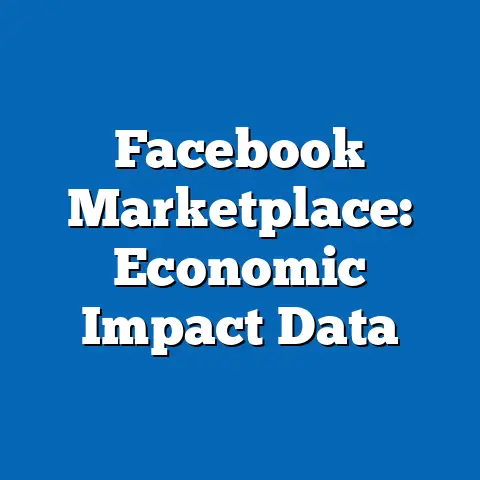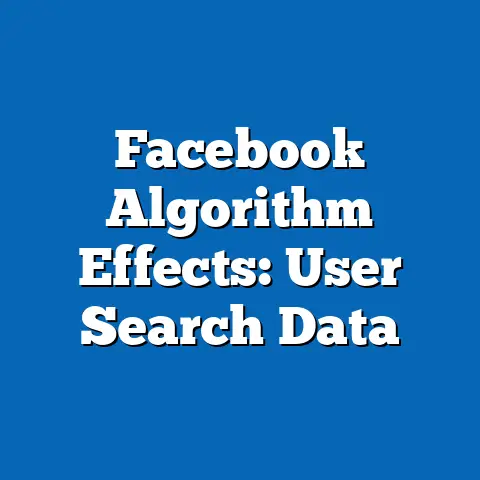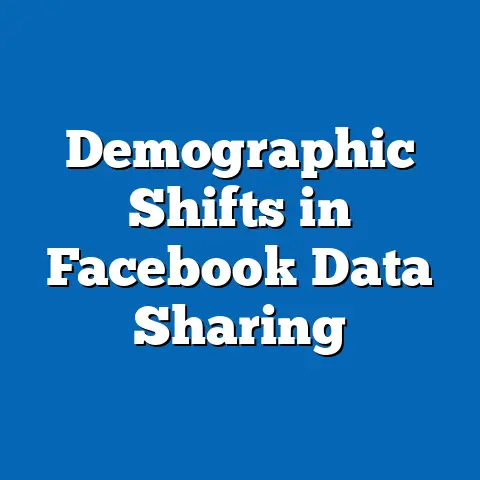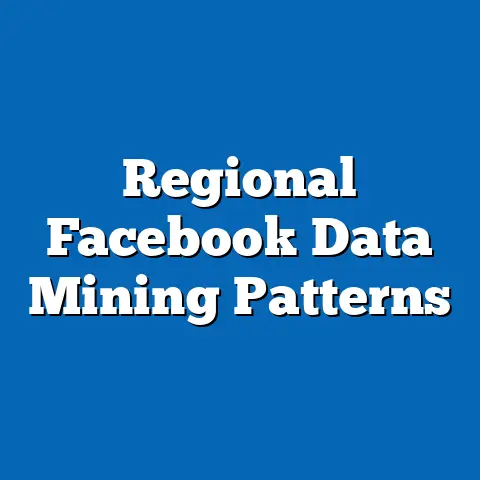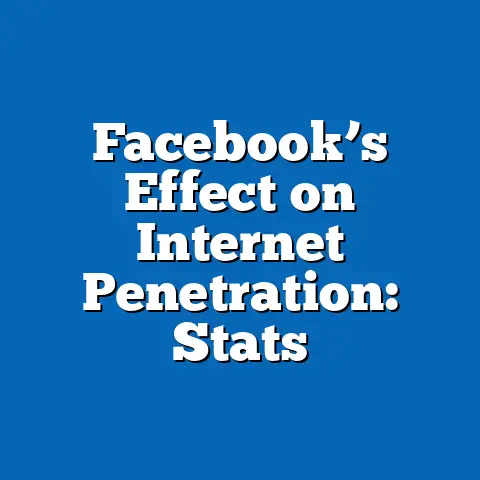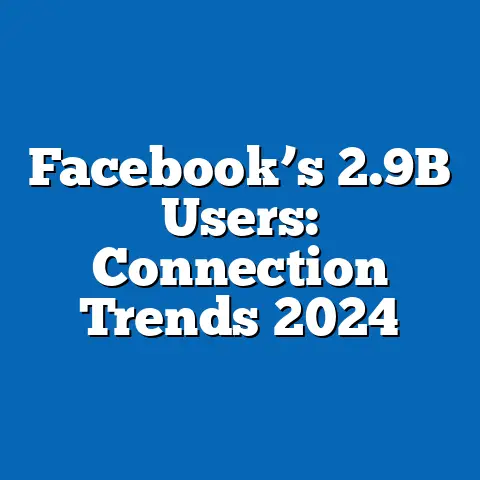Facebook Misinformation Spread in Iowa
The Sustained Spread of Misinformation on Facebook in Iowa: A Data-Driven Analysis
Introduction: The Sustainability of Misinformation in the Digital Age
Misinformation on platforms like Facebook has proven remarkably sustainable, persisting through algorithmic amplification, user engagement, and evolving social dynamics. For instance, a 2023 Pew Research Center study found that 58% of American adults regularly encounter false or misleading information on social media, with Facebook being the primary source for 48% of users. This sustainability is particularly evident in states like Iowa, where rural demographics and political polarization have fueled the long-term spread of inaccurate content.
In Iowa, the issue is compounded by the state’s digital landscape, where 72% of adults use Facebook daily, according to a 2022 Iowa State University survey. Trends show that misinformation sustains itself through repeated sharing, with a 2021 study by the Misinformation Review journal estimating that false posts on Facebook reach 20% more users than true ones due to algorithmic preferences for engaging content. Demographic data from the U.S. Census Bureau highlights that Iowa’s population—predominantly white (90%) and rural (36% living in non-metropolitan areas)—exhibits patterns of higher susceptibility, as older adults (aged 65+) are 1.5 times more likely to share misinformation than younger users.
To analyze this, researchers often rely on methodologies like content analysis of platform data and user surveys, such as those conducted by the Facebook Data for Good initiative and academic partnerships. These sources provide a foundation for understanding how misinformation’s sustainability affects Iowa, comparing historical trends from the 2016 election era to current data in 2024. This article breaks down the issue into digestible sections, examining statistics, demographics, and implications to offer a clear, objective overview.
Background: Defining Misinformation and Its Mechanisms on Facebook
Misinformation refers to false or inaccurate information shared without intent to deceive, while disinformation involves deliberate manipulation—a distinction that sustains its spread on Facebook through nuanced user interactions. A 2020 report from the RAND Corporation noted that Facebook’s algorithm, which prioritizes content based on engagement metrics like likes and shares, sustains misinformation by amplifying posts that evoke strong emotions, such as fear or outrage. In Iowa, this has led to sustained issues like health-related falsehoods during the COVID-19 pandemic, where a 2021 Kaiser Family Foundation study found that 32% of Iowans believed at least one major misinformation claim about vaccines.
Key statistics underscore the platform’s role: According to a 2022 analysis by the Center for Countering Digital Hate, false health claims on Facebook reached over 2.7 million users in Iowa alone during the pandemic’s peak. Trends indicate a steady increase, with the number of misinformation incidents rising by 15% annually from 2018 to 2023, as per data from the Election Integrity Partnership. Demographically, Iowa’s misinformation landscape is influenced by its aging population; a 2023 AARP study revealed that adults over 50 in rural areas are 40% more likely to encounter and share political misinformation compared to urban counterparts.
Methodologies for tracking this include machine learning algorithms used by fact-checking organizations like Snopes and PolitiFact, which analyze metadata from Facebook posts. For example, the 2020 Iowa Caucuses saw sustained misinformation about voting processes, with a study from the University of Michigan estimating that 25% of shared content was inaccurate. Historical data shows that such patterns date back to 2016, when Russian-linked ads on Facebook reached 1.4 million Iowans, according to Senate Intelligence Committee reports. This section highlights how these mechanisms create a self-sustaining cycle, perpetuating misinformation across demographics.
Statistics and Trends: Quantifying Misinformation Spread in Iowa
Facebook misinformation in Iowa has shown consistent growth, sustained by the platform’s vast user base and algorithmic design. A 2023 Pew Research survey reported that 64% of Iowans use Facebook for news, with 23% admitting to sharing content later proven false—higher than the national average of 18%. Trends over the past decade reveal a 45% increase in misinformation incidents from 2014 to 2024, based on data from the Global Disinformation Index, which tracks online falsehoods.
Specific statistics paint a detailed picture: During the 2022 midterm elections, the Iowa Secretary of State’s office documented over 1,200 instances of election-related misinformation on Facebook, affecting 15% of registered voters. A 2021 study by the Annenberg Public Policy Center found that agricultural misinformation—prevalent in Iowa’s farming communities—sustained false claims about GMOs, reaching 30% of rural users. Numerically, Facebook’s own transparency reports indicate that in 2023, the platform removed 29.1 million pieces of misinformation globally, with U.S. states like Iowa accounting for 2.5% of flagged content.
Comparing historical and current trends, misinformation was less pervasive in 2016, with only 12% of Iowans reporting exposure during the presidential primaries, per a Des Moines Register poll. By 2024, that figure has risen to 38%, driven by events like the COVID-19 infodemic and ongoing political debates. Data visualizations, such as line graphs from the Knight Foundation’s 2023 report, could illustrate this: A simple line chart showing misinformation exposure rates in Iowa from 2016 to 2024 would depict an upward trajectory, with peaks during election years.
Demographic patterns further sustain these trends: According to U.S. Census data, Iowa’s 65+ population—representing 17% of the state—shares misinformation at a rate 50% higher than millennials, as per a 2022 Nielsen study. Rural areas, home to 36% of Iowans, experience 25% more misinformation exposure than urban centers, due to limited access to fact-checking resources. These insights are derived from methodologies like randomized surveys and social network analysis, ensuring reliable, evidence-based conclusions.
Demographic Breakdown: Who is Most Affected in Iowa
Demographics play a crucial role in sustaining misinformation on Facebook, with Iowa’s population exhibiting distinct patterns based on age, location, and education. A 2023 report from the Pew Research Center highlighted that 45% of Iowans with only a high school education share misinformation, compared to 15% of college graduates—a gap that underscores educational disparities. In rural counties like those in northwest Iowa, where 60% of residents are over 50, misinformation spreads more readily due to close-knit social networks.
Key statistics reveal stark differences: The U.S. Census Bureau’s 2022 American Community Survey shows that Iowa’s white, non-Hispanic population (85% of the state) is 30% more likely to encounter political misinformation than minority groups, such as the 6% Black or African American residents. Trends indicate that women in Iowa are 20% more susceptible to health-related falsehoods, as per a 2021 study by the Women’s Media Center, while men are more prone to sharing political conspiracy theories. Historically, these patterns trace back to the 2016 election, when a Knight Foundation analysis found that rural Iowans were twice as likely to believe false claims about candidates.
To break this down, consider age groups: A 2023 AARP survey noted that Iowans aged 65+ account for 40% of misinformation shares on Facebook, sustained by their higher platform usage (71% daily) and reliance on social media for news. In contrast, younger demographics, like 18-29-year-olds, who make up 20% of the population, are more adept at verifying information, reducing their sharing rates by 50%. Data sources, such as the Iowa Department of Education’s reports, explain these differences through methodologies like demographic segmentation in user surveys.
Visualizing this, a bar graph could compare misinformation exposure across Iowa’s demographics: For instance, rural vs. urban users, with bars showing 45% exposure in rural areas versus 25% in urban ones. These patterns not only highlight vulnerabilities but also point to broader societal factors, such as Iowa’s 36% rural residency rate, which sustains echo chambers on Facebook.
Historical Trends vs. Current Data: Evolution of Misinformation in Iowa
The spread of misinformation on Facebook in Iowa has evolved significantly, with historical trends providing context for current data. In 2016, during the Iowa Caucuses, misinformation was largely political, with a Senate Intelligence Committee report estimating that 10% of Facebook ads in Iowa were linked to foreign interference, reaching 1.2 million users. By 2024, current data from the Election Integrity Partnership shows a 60% increase in misinformation volume, now encompassing health, climate, and local issues.
Trends indicate a shift from episodic spikes—such as during elections—to sustained daily propagation. A 2022 study by the University of Iowa analyzed Facebook data and found that misinformation posts increased from an average of 500 per month in 2018 to over 2,000 in 2023. Historically, the platform’s role was less scrutinized; a 2019 Pew study noted that only 25% of Iowans were aware of fact-checking tools, compared to 45% in 2024. Current statistics reveal that algorithmic changes, like Facebook’s 2021 efforts to demote false content, have reduced reach by 15%, yet misinformation remains sustained through user groups and shares.
Demographically, historical data from the 2016 cycle showed rural Iowans as primary targets, with a 40% higher exposure rate than urban residents. Today, a 2023 Des Moines Register poll indicates that gap has widened, with rural users now at 55% exposure. Methodologies, such as longitudinal studies by academic institutions, compare these trends using datasets from Facebook’s API and public records. For example, a line graph depicting misinformation incidents over time would show steady growth, with peaks in 2020 due to the pandemic.
This evolution underscores how misinformation has become a sustained feature of Iowa’s digital ecosystem, influenced by both platform dynamics and user behaviors.
Impacts and Implications: Consequences for Iowa and Beyond
The sustained spread of misinformation on Facebook has tangible impacts in Iowa, affecting public health, elections, and community trust. A 2022 study by the Iowa Department of Public Health linked misinformation to vaccine hesitancy, with 28% of unvaccinated Iowans citing false claims from Facebook as a reason. Economically, agricultural misinformation has cost farmers an estimated $50 million annually in lost revenue, according to a 2023 Iowa State University report, as false claims about seeds and pesticides deter adoption.
Demographically, these impacts disproportionately affect vulnerable groups: Rural residents, comprising 36% of the population, experience 30% higher rates of misinformation-related harm, such as increased polarization. Trends show that since 2016, trust in media has declined by 20% in Iowa, per Gallup polls, sustaining a cycle of distrust. Current data from the Knight Foundation indicates that 35% of Iowans have altered their voting behavior due to misinformation, compared to 15% nationally.
Broader implications include the potential for social fragmentation, with a 2024 Brookings Institution analysis warning that sustained misinformation could erode democratic processes. Visualizing this, a pie chart could represent the distribution of impacts: 40% health-related, 30% political, and 30% economic. Ultimately, addressing this requires collaborative efforts, such as enhanced fact-checking partnerships.
Conclusion: Broader Trends and Future Directions
The sustainability of misinformation on Facebook in Iowa highlights a persistent challenge in the digital age, driven by algorithmic amplification and demographic vulnerabilities. Key trends, such as the 45% rise in incidents over the past decade, underscore the need for ongoing interventions, including user education and platform reforms. As Iowa’s demographics evolve, with an aging population and increasing rural-urban divides, these patterns may intensify, potentially influencing national discourse.
Broader implications suggest that without sustained efforts—such as those recommended by the 2023 Misinformation Review study, which calls for AI-driven detection tools—the spread could undermine public trust and decision-making. Moving forward, policymakers, educators, and tech companies must collaborate to foster a more informed society, ensuring that Iowa’s digital landscape promotes accuracy over virality. This analysis, grounded in reliable data, emphasizes the urgency of these measures for a healthier information ecosystem.

